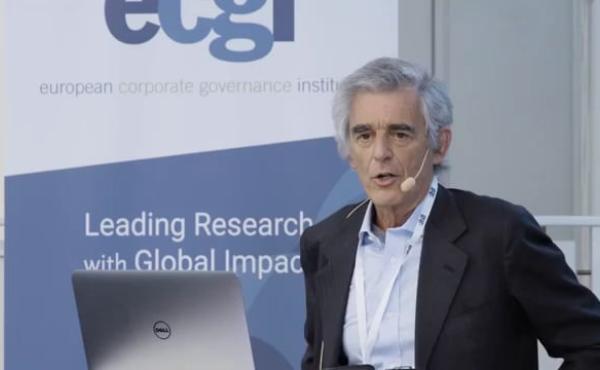Executive Compensation and Say on Pay

Executive Compensation and Say on Pay
Executive compensation has been a major corporate governance topic since the 1990s. Jensen and Murphy’s seminal article, “CEO Incentives: It’s Not How Much You Pay, But How” (68 Harvard Business Review 138 (1990)) effected a major paradigm shift in this area. Executive compensation, which had previously been viewed as a fiduciary duty problem, was reinterpreted as an issue of misalignment of managerial and shareholder interests. Under this paradigm, pay for performance became a self-executing governance technique to align the interests of management and shareholders, providing incentives for superior corporate performance.
Since the 1990s, there has been much debate about whether executive compensation is determined efficiently by disinterested directors (the optimal contracting model) or whether there are systemic problems in executive pay due to the ability of corporate managers to exert control over the pay-setting environment and process (the managerial power model). The primary focus under optimal contracting model was on the design and structure of optimal compensation contracts. The managerial power model, however, suggested the need for stronger regulatory techniques to reduce management’s inherent power advantage and flaws in compensation arrangements.
There have been two major shocks to financial markets since the time of Jensen and Murphy’s influential article – (i) the collapse of Enron and WorldCom in the United States, and analogous international scandals at the turn of this century; (ii) the 2007-2009 global financial crisis. Many regarded executive compensation to be a contributing factor in these crises, and there was growing concern about wealth concentration and income inequality. This led to the introduction around the world of new regulatory techniques to control executive compensation.
Perhaps the most high profile of these techniques was “say on pay”, which accords shareholders stronger participatory rights in relation to executive compensation. Many jurisdictions have now adopted say on pay. Although the trend might, at first sight, suggest regulatory convergence, there are, in fact, a range of different forms of say on pay, with varying levels of stringency and shareholder power.
Say on pay is itself highly controversial. It inevitably shifts more power to institutional investors, and arguably gives them a quasi-regulatory role with respect to executive pay. Some commentators view this as a valuable check and balance on managerial power in a dispersed ownership context, and as consistent with institutional investors’ evolving stewardship role. Others, however, regard shareholders as at least partly responsible for perverse incentives in executive pay. According to these commentators, say on pay represents a dangerous regulatory development, which has the potential to harm other stakeholder groups.
ECGI will continue to track the progress of research in this area and related developments. Additional resources will be made available through these pages.
Queries, suggested inclusions, and project funding proposals should be directed to Prof. Jennifer Hill (jennifer.hill@sydney.edu.au).
****
Resources:
Academic Papers:
- Jill E. Fisch, Darius Palia and Steven Davidoff Solomon, “Is Say on Pay All About Pay? The Impact of Firm Performance” (2018)
- Carsten Guerner-Beuerle and Tom Kirchmaier, “Say on Pay: Do Shareholders Care?” (12 November 2018)
- Miriam Schwartz-Ziv and Russ Wermers, “Do Institutional Investors Monitor Their Large vs Small Investments Differently? Evidence from the Say-on-Pay Vote” (29 January 2019)
- Ingolf Dittman, Christoph Schneider, Yuhao Zhu, “The Real Cost of Executive Compensation: The Behindedness Aversion of Employees” (17April 2018)
- Claire Yang Liu, Ronald Masulis and Jared Stanfield, “CEO Option Compensation Can Be a Bad Option: Evidence from Product Market Relationships” (22 September 2017)
- Isabel Feito-Ruiz and Luke Renneboog, “Takeovers and (Excess) CEO Compensation” (29 July 2017)
- Alex Edmans, Xavier Gabaix, Dirk Jenter, “Executive Compensation: A Survey of Theory and Evidence” (17 July 2017)
- Ingolf Dittman, Ko-Chia Yu, Dan Zhang, “How Important are Risk-Taking Incentives in Executive Compensation?” (1 August 2016)
- Roberto Barontini, Stefano Bozzi, Guido Ferrantini, “Measuring Compliance with Executive Remuneration Standards at Controlled Corporations” (1 November 2016)
- Alex Edmans and Xavier Gabaix, “Executive Compensation: A Modern Primer” (1 May 2015)
Policy papers, reports, viewpoints and speeches:
Blog posts:
****
Contact:
Prof. Jennifer Hill






























































